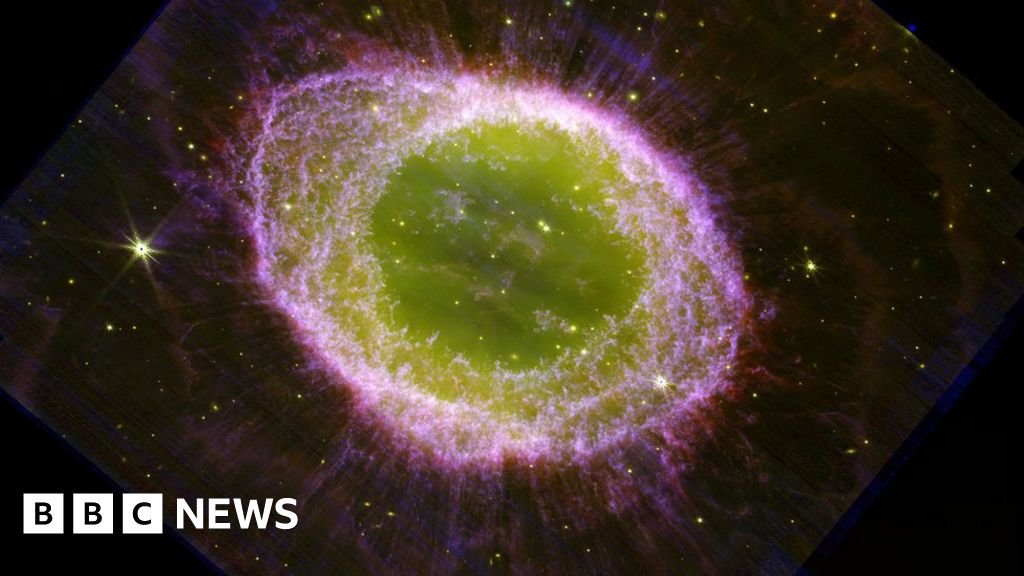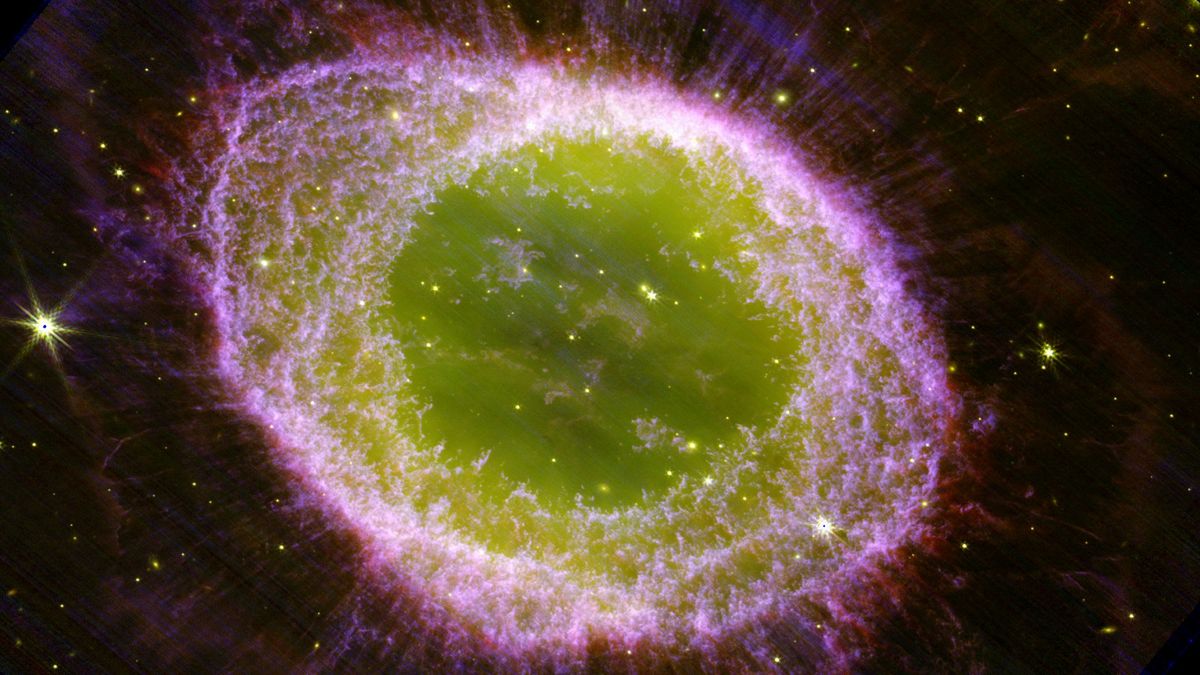The James Webb Telescope, the most powerful telescope ever developed, has once again astounded the scientific community by capturing stunning and unprecedented images of the final stages of a distant star’s life.
Among the stunning depictions is the Ring Nebula, otherwise called Messier 57, a heavenly wonder found roughly 2,600 light years from Earth. This captivating astronomical phenomenon derived its name from its mesmerizing, doughnut-like structure, and its recent portrayal may hold the key to unraveling the mysteries of stars as they reach the end of their cosmic journey.

Also Read: ISRO Launches PSLV-C56 Rocket, Deploys 7 Singaporean Satellites
Sources Related to James Webb Telescope (For R&D)
- About James Webb Telescope
- James Webb telescope and how it works
- NASA’s James Webb Telescope mission
- 32 Jaw-dropping James Webb Telescope images
- One year of James Webb: Five things the space telescope has taught us since its first image
The Ring Nebula appeared while a dying star exhausted its nuclear fuel, entering the final stages of its life. In a spectacular display, the star expelled its outer layers into space, making a kaleidoscope of colors, including glowing pink rings, expanding bubbles, and wispy clouds.
This phenomenon, known as a planetary nebula, has been a source of fascination for astronomers since the 18th century, when William Herschel mistakenly perceived their curved shapes as that of planets.
The new pictures caught by JWST’s close infrared camera (Nircam) have allowed astronomers an unparalleled perspective on the Ring Nebula’s intricate structure. Notably, the inner region surrounding the central white dwarf, a dense star approximately the size of a planet, has been revealed with flawless clearness.
Also Read: Texas Unveils World’s Largest 3D-Printed Home Community
The white dwarf, a remnant of the star’s core, offers a brief look into the future fate of stars like our own sun, which are supposed to take their lives in a similar fashion.
One of the most amazing parts of the Ring Nebula’s display is the emission of light of specific colors by different chemical elements present within it.
These colorful bands provide vital clues for astronomers to study the evolution of nebulae in great detail. Examining these spectra, researchers desire to gain insights into the complex processes shaping the nebula’s structure and the life cycles of stars.
The Ring Nebula finds its home in the Lyra constellation of stars and graces the night sky with its presence throughout the late spring months. It has turned into a notable object for stargazers and and amateur astronomers alike, captivating the imagination with its ethereal beauty and enigmatic origins.
Also Read: Samsung Unveils New Galaxy Z Flip 5 and Galaxy Z Fold 5
The recent observations of the Ring Nebula were made possible through a collaborative effort of an international team of scientists from the UK, France, Canada, the US, Sweden, Spain, Brazil, Ireland, and Belgium. The diverse expertise and cutting-edge technologies pooled from these nations have brought to light the stunning details of this celestial wonder.
The Ring Nebula is just one of the many celestial wonders that JWST has focused on since its launch. The telescope has recently caught pictures of ancient galaxies, celestial clusters, and the birth of stars.
Its capacity to catch pictures in high resolution and infrared wavelengths has opened new vistas for astrophysical research, pushing the boundaries of our understanding of the universe.
Also Read: China Launches World’s First Methane-Powered Space Rocket























+ There are no comments
Add yours